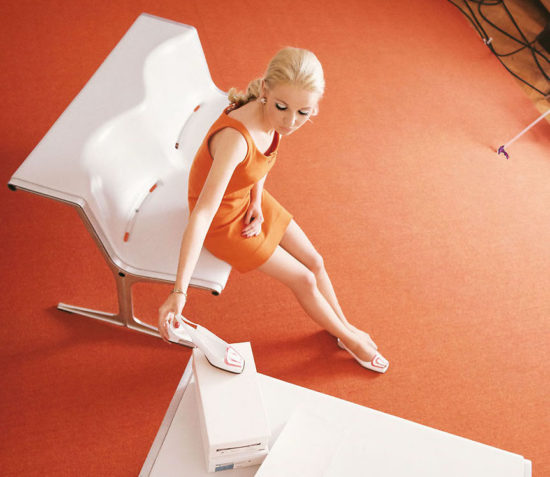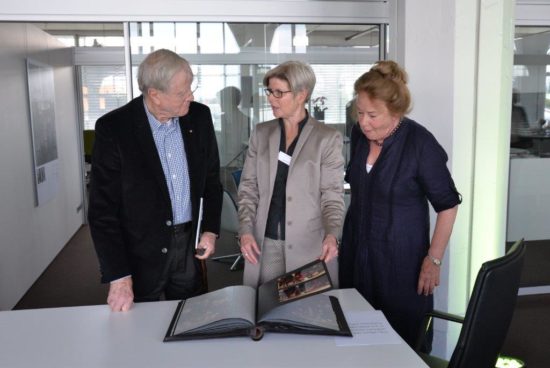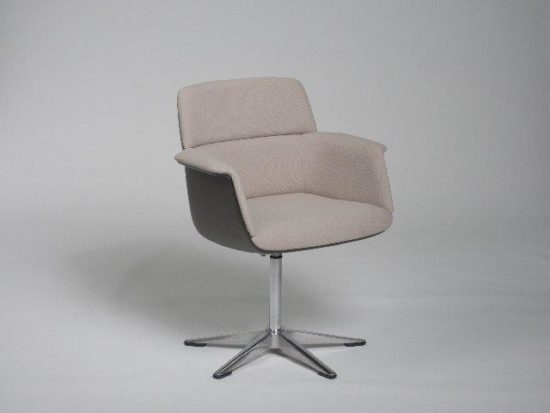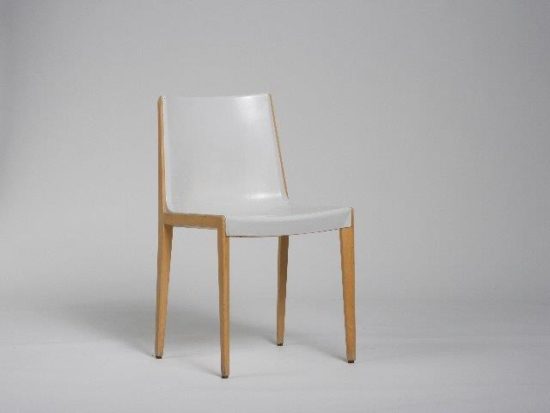
Wilkhahn started collaborating with Friso Kramer back in the early 1960s. Fritz Hahne, Wilkhahn’s CEO at the time, had seen the Revolt Chair, a simple but nevertheless sophisticated multipurpose chair designed for the Ahrend Group, in an architecture magazine. The meeting with the designer at a Dutch Wilkhahn dealer’s gave rise to successful joint projects and a lifelong friendship. Because of the devasting destruction in the Netherlands during the second world war, this was pretty unusual at the time because the Dutch still harboured a lot of resentment towards Germany.


Friso Kramer’s designs for Wilkhahn chairs with their spacious, attractively shaped and luxuriously upholstered seat shells made of fibreglass-reinforced plastic turned plastic chairs into acceptable items of furniture for executive offices. For the first time, Kramer combined wooden frames with glass-fibre-reinforced plastic shells for Wilkhahn chair designs. The 1200 seating unit from 1967 was pioneering and initially placed in waiting rooms in hotels, universities and companies. However, once it was used in Munich’s underground stations during the Olympic Games, it became popular for furnishing public transit zones and waiting areas.


Friso Kramer’s friendship and ties with Wilkhahn and the Hahne family lasted until the end of his long life. As short a time ago as 2015, he attended the opening of an exhibition for historical exhibits from Wilkhahn history in its showroom in Van Nelle Fabriek in Rotterdam. Friso Kramer succumbed to pneumonia and passed away at the age of 96 in Amsterdam on 17 February 2019. We join his wife Netti in mourning the loss of a brilliant designer and good friend.



Friso Kramer’s life
Friso Kramer was born the son of architect Piet Kramer in Amsterdam on 13 August 1922. He attended the Montessori school and then the industrial college followed by the electrical engineering college. Afterwards, he studied interior design at the Institute of Applied Arts in Amsterdam (Instituut voor Kunstnijverheidsonderwijs).
At the end of the second world war, Kramer embarked on is career as an employee of the Jan Piet Kloos architecture studio and also worked with the Frans Paulussen interior design studio for a short while. He was a designer at the De Cirkel steel furniture factory from 1948 to 1963. In 1963, he and Wim Crouwel, Benno Wissing, Paul and Dick Schwartz founded the famous Total Design studio. From 1971 to 1983, he was also art director and senior assistant at the Ahrend Group.
Friso Kramer is one of the big Dutch names in terms of the development of industrial design and had a number of influential posts. He was board member at the Rietveld Academy, a member of Amsterdam’s Arts Council and Boosting, the Foundation for Industrial Building in the Netherlands. He was a member of the Dutch Council for Industrial Design and the International Design Consortium. As a guest lecturer, he taught at the Royal Academy of Art in the Hague and was also a sought-after judge for international design competitions.
Amsterdam’s Stedelijk Museum for Modern Art in Amsterdam also devoted an exhibition of Friso Kramer’s work in 1977 and 1978. A showcase of his work in the Boymans van Beuningen Museum in Rotterdam followed in 1991. The book Friso Kramer Industriële Vormgeving (Friso Kramer Industrial Design) was published in the same year too. In 1994, Beatrix, who was queen at the time, presented him with the Order of Orange-Nassau.
Mid Mod Design’s platform recently devoted a special feature to Friso Kramer.
Particular tribute was paid to the 1200 seating system in a special iF Award editorial on design for public spaces.
